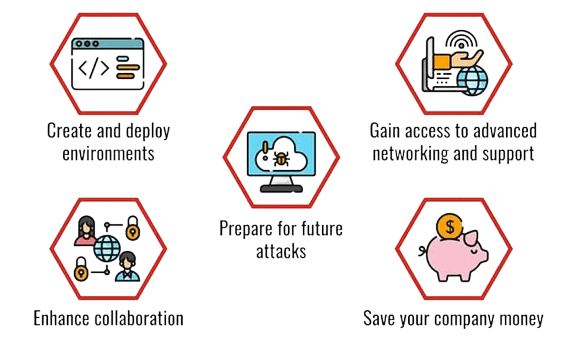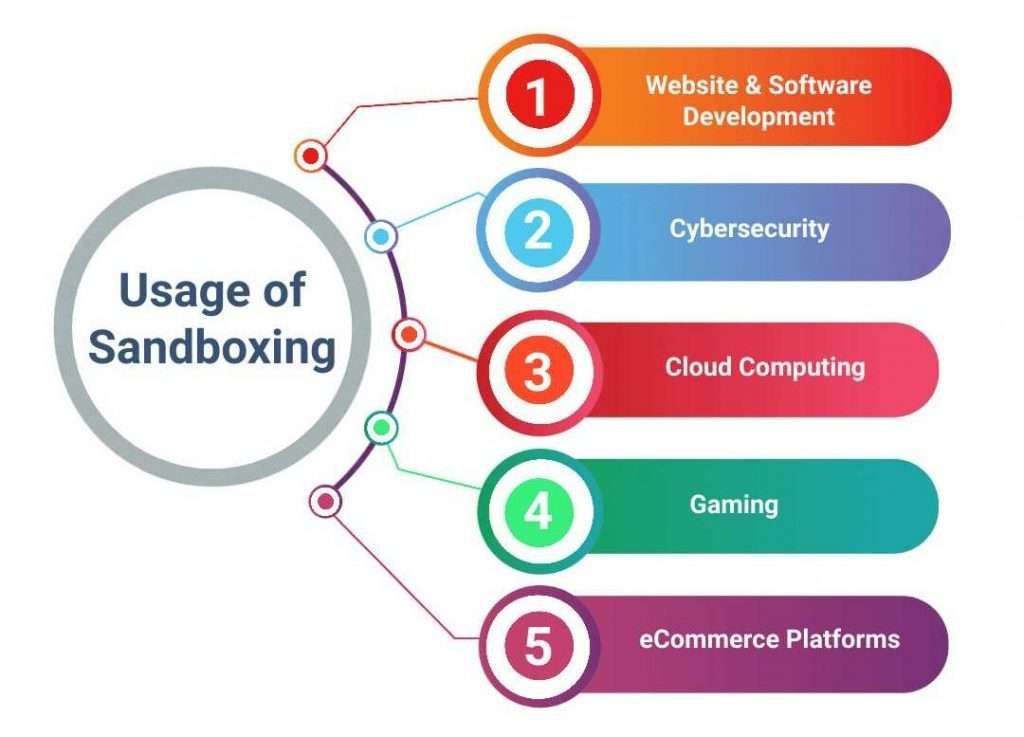
- Introduction
- Definition of a Sandbox Environment
- Types of Sandbox Environments
- What is a Sandbox Environment?
- Best Practices for Setting up Sandbox Environment
- Benefits of Sandbox Application Environment
- Conclusion
In this article, we’re going to take a deep dive into what sandbox environments are and explore their importance within the software development lifecycle. We’ll briefly mention some of the different types of sandboxes in existence today, their purposes, and many of the different benefits that sandboxes offer to developers, testers, and information security professionals alike. In the realm of Cyber Media, sandboxes also play a crucial role in safely analyzing and testing new software or malware without posing a risk to the broader digital ecosystem. Finally, we’ll give you some best practices for creating effective sandbox software development, along with real-world applications of how they impact. Whether you are a seasoned developer or just getting started, there is always room for knowing how some aspects may help improve your processes in developing the software and improving the overall computer security of your application in general.
Are You Interested in Learning More About Sandbox Environment? Sign Up For Our Cyber Security Online Training Today!
Introduction
Reliability and security in software applications have become of utmost importance in this rapidly digitalized world. One way to achieve this is through the use of a sandbox an approach that will be detailed here, starting with what a sandbox software development is, its purposes, types, benefits, best practices for setup, and real-world applications. It helps in innovation because the developers can have fun trying new features or technologies without ever having to fear messing up the production environment. Besides, a Sandbox Environment helps Cyber Security Training Courses and reliability. Teams can isolate testing processes from live applications as well as experiment with different configurations and evaluate performance. This not only reduces the cycle time of development but also promotes a culture of experimentation and continuous improvement, which leads to more robust and user-friendly software solutions. As more and more organizations adopt agile methodologies, then balancing speed with security and reliability is better done by a sandbox.
Definition of a Sandbox Environment
A sandbox environment is a virtual space in which developers and testers can run their programs or execute their code outside the production environment. This controlled setting lets users experiment, test, and develop applications without affecting other systems or data. In the context of the Google Hacking Database, sandboxes can be used to safely test advanced search queries and techniques without exposing sensitive information or compromising network security. Think of it as a safe playground where developers can build and break things without real-world consequences. Sandbox allows developers to run many scenarios-from stress testing to running potentially harmful without placing any effects on the application integrity.

All that isolation does, of course, is protect the production environment from bugs and vulnerabilities, but also one can test new features and updates through detailed testing of their new build of the software. By doing so, teams can catch problems well before the final product is developed, and perhaps deploy with less downtime. An ethical hacker plays a crucial role in this process, using their skills to identify vulnerabilities and potential weaknesses within the system during the testing phase. Essentially, sandbox software development serves as a valuable creativity tool that helps guarantee stability in software development.
To Earn Your Sandbox Certification, Gain Insights From Leading Cyber Security Experts And Advance Your Career With ACTE’s Cyber Security Online Training Today!
Types of Sandbox Environments
Software Sandbox
Software sandboxes are isolated applications and processes on one machine. They enable the testing of installations, configurations, and upgrades of the software without affecting the host operating system. Examples include virtual machines and containerized applications using Docker or Kubernetes.
Cloud Sandbox
Cloud sandboxes implement cloud computing resources for developing and testing isolated environments. These virtualized environments are particularly valuable for Web Application Security, as they allow developers and security professionals to test web applications for vulnerabilities, exploits, and data security flaws without exposing live systems to risk. Cloud providers include AWS, Azure, and Google Cloud, among others, that offer sandbox solutions integrated into their services.
Network Sandbox
A network sandbox simulates an entire network environment. In this sense, organizations can test how applications behave under various network conditions. The specific utility of such a sandbox software development lies in giving insights into the overall impact security measures and monitoring tools have.
What is a Sandbox Environment?
The first purpose of a Sandbox Environment is to provide a sandboxed environment where applications and code can be run with no interference to the production environment. Such isolation is imperative to prevent any kind of disruption caused by bugs or errors that would cause the whole features, configurations, or updates to be tested. A sandbox plays a significant role in the overall reliability and stability of software applications by finding out and solving potential issues in advance, before their actual implementation.
Apart from testing and validation, it also creates a culture of innovation and experimentation within the developers who can test new technologies and methodologies without any consequences. This also enhances safety, allowing for executing untrusted code, thus minimizing the threat to sensitive data and systems. Besides these, sandbox software development also serves as an excellent training ground because they are a risk-free platform for learning desired practices in Cyber Security Training Courses. They are, therefore, very significant in ensuring quality and innovation in development teams.
Gain Your Master’s Certification in Cybersecurity by Enrolling in Our Cyber Security Expert Masters Program Training Course.
Best Practices for Setting up Sandbox Environment
- Define Clear Objectives: Decide on the purpose of the sandbox and what is expected to be accomplished. This attention will direct how it is configured and utilized.
- Isolate: Use the sandbox completely isolated from the production environment in case there is an accidental leak or interaction. This isolation is particularly important in the context of Cyber Defamation, where malicious actors may attempt to exploit vulnerabilities or deploy harmful content.

- Automate Deployments: Leverage automation tools for deployment and testing within the sandbox to make your process more efficient and eliminate human error.
- Activity Monitoring and Logging: Employ monitoring tools that can monitor all the activities within the sandbox. These will identify problems or areas to improve.
- Environment Update: The environment should be updated fairly regularly, as it should maintain the latest software and security patches.
Benefits of Sandbox Application Environment
- Risk Mitigation: The development sandboxes reduce the risk of bugs or vulnerabilities entering the production environment by fully isolating the applications. Hence, the containment strategy allows full testing and evaluation before the changes are implemented on the live systems.
- Cost Efficiency: Sandbox saves an organization cost in the long term. Issues are identified as early as possible in the development process, which can help avoid costly fixes after deployment. sandbox environments are particularly beneficial in Network Penetration Testing, as they enable security professionals to safely simulate attacks and vulnerabilities without risking harm to live systems.
- Innovation Facilitation: For facilitating innovation, a sandbox ensures that developers are provided with an environment to experiment freely with new ideas and fail without harming someone downstream. Creativity is welcomed here, and it leads to the development of cut-throat solutions and features.
Preparing for a Cyber Security Job Interview? Check Out Our Blog on Cyber Security Interview Questions and Answers
Conclusion
A sandbox is of immense value for developers, testers, and security professionals alike. Through risk mitigation, innovation enhancement, and quality improvement of resulting software applications, sandboxes provide a controlled environment to experiment and test. Software may be used, considering cloud solutions, or network emulations in either case. Organizations using these environments benefit through streamlined development processes and an assuredly more secure, reliable final product. As the technology progresses, the Sandbox Environment will be more important in the software development lifecycle thus, encouragement to use these processes should grow with the help of cyber security tools. In today’s world, cyber attackers in Cyber Security Training Courses are getting smarter by the day, thus pointing toward a need for something potent to beat these threats at all costs. This sandbox can identify weaknesses during development and provides an area to perform such security assessments even post-deployment. With the testing of an application in isolated environments, organizations will stay ahead of their potential threats and achieve compliance with industry standards. On top of being able to secure the solution, this proactive approach gives credibility to stakeholders as well as users, thus providing a long-term certificate of success in and trustworthiness of the software solutions developed.





